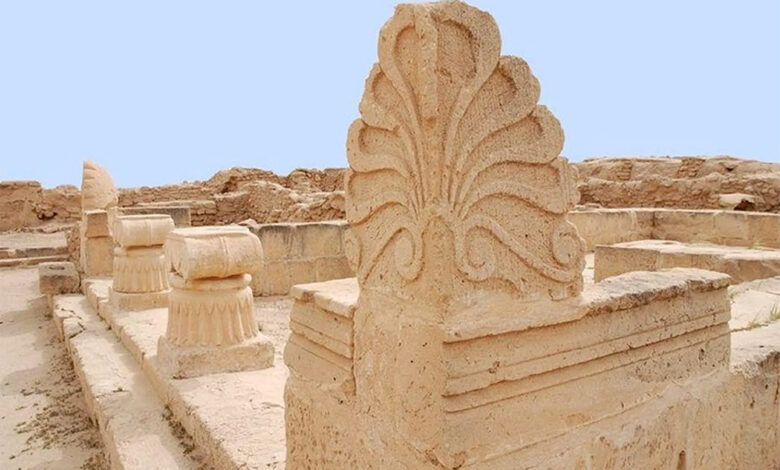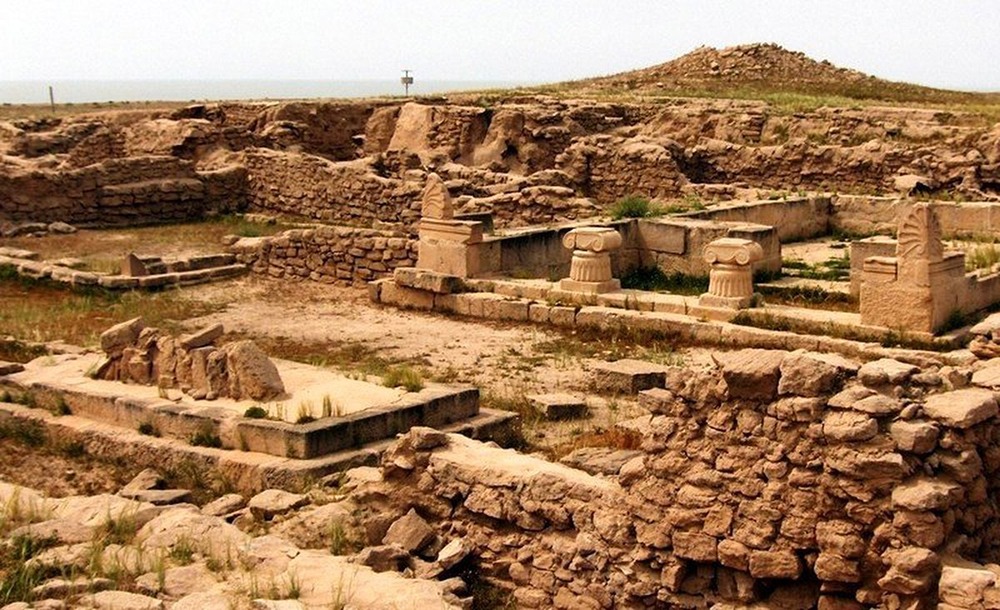Sustainable Tourism Preserves, Promotes, Cultural Heritage

The Times Kuwait Report
Tourism is among the main drivers of the global economy, with the total economic output of the tourism industry contributing nearly 10 percent of the world’s gross domestic product (GDP) in 2024, and accounting for one in ten jobs worldwide. Aside from its vital role in economic development, tourism spurs social progress and sustainable development, creates employment and business opportunities, and serves as a bridge fostering peace and cultural understanding between people across borders.
The potential benefits of positive tourism incidentally dovetails seamlessly with the goals of Kuwait’s Vision 2035 development plan. The goals of Vision 2035, which aim to transform Kuwait into a financial, commercial and culture hub in the region. Includes, among others, diversifying the economy, promoting sustainable non-oil sector growth, encouraging greater private-sector participation in development, and generating employment opportunities for nationals.
However, the World Tourism Organization (UNWTO), the United Nations entity promoting responsible, sustainable, and inclusive tourism, warns that economic growth alone is not sufficient to help realize the full potential of tourism. Achieving the immense possibilities of tourism, including its myriad benefits to local communities, demands inclusive development, good governance, strategic planning, robust monitoring, and clearly defined priorities that align with long-term sustainability goals.
In line with the UN thinking, the government headed by His Highness the Prime Minister Sheikh Ahmad Abdullah Al-Ahmad Al-Sabah has prioritized development of a positive tourism sector in the country. As part of furthering this tourism-oriented approach, last August, Minister of Information and Culture, and Minister of State for Youth Affairs, Abdulrahman Al-Mutairi, announced the launch of an integrated and comprehensive online portal, ‘Visit Kuwait’, to streamline tourism-related activities.
Minister Al-Mutairi explained that the portal brings together the public and private sectors to develop tourism infrastructure, including entertainment, hospitality, and transportation facilities, and create opportunities for investment in tourism by local and international investors. Describing the initiative as a ‘single-window’ solution, the minister stated that the portalintegrates all tourism-related information, activities, and services under one umbrella.
Reiterating Kuwait’s keenness to develop the tourism sector, Minister Al-Mutairi emphasized that tourism plays a significant role in promoting and preserving Kuwait’s cultural heritage and identity. From the establishment of the trail-blazing, progressive Al-Arabi magazine in 1958, to today’s cutting-edge cultural institutions that push the boundaries of arts and science, Kuwait’s cultural identity has always been grounded in an avant-garde and experimental tradition that molded the perspectives of generations.
Today, cultural institutions continue to play a vital role in enlightening new generations, invigorating societies, promoting intellectual growth, and fostering pride in national heritage. Among the prominent public cultural institutions in the country are the National Library of Kuwait founded in 1923 and reestablished through an Amiri decree in 1994 to collect, preserve and document Kuwait’s national heritage.

Meanwhile, the National Council for Culture, Arts, and Letters (NCCAL), established in 1973, promotes creativity in various cultural fields, protects Kuwaiti antiquities, culture, and heritage, develops cultural infrastructure, and encourages investment in cultural tourism. Similarly, the Scientific Center, established in 2000, was set up to promote science and technology, and to foster a scientific mindset, especially among school children.
More recent additions to the cultural landscape of Kuwait include the Sheikh Jaber Al-Ahmad Cultural Centre that opened in 2016, considered as one of the foremost performing arts centers in the region, and the Sheikh Abdullah Al-Salem Cultural Centre inaugurated in 2018, which is recognized as the world’s largest cultural project of its kind.
The multitude of cultural institutions and their success in energizing creative cultural initiatives and preserving national heritage, attest to the importance that Kuwait places on cultural development, and underscores the country’s influential role in regional cultural developments. This civilizational and cultural significance of Kuwait in the Arab world led to Kuwait being named the Capital of Arab Culture in 2001 and being re-selected as the Capital of Arab Culture and Arab Media for 2025.
Following Kuwait’s selection, Minister Al-Muthairi affirmed that the choice of Kuwait as the Arab cultural capital in 2025 is a continuation of the country’s pioneering journey in cultural creativity. He added that the selection portrays Kuwait as a leader in the Arab cultural and media arenas, a model in fostering cultural dialogue between nations, and a significant cultural heritage destination in the region.
Underlining Kuwait’s credentials as a cultural heritage destination for tourists, Secretary-General of the National Council for Culture, Arts and Letters (NCCAL) Dr. Mohammed Al-Jassar recently stated that Kuwait aims to protect and preserve its heritage archeological sites and architecture, through innovative techniques and strategies. He added that the goal is to turn these destinations into sustainable cultural tourism destinations, enabling them to be registered on the World Heritage List, and find their place among leading global heritage sites.
Failaka Island, home to one of Kuwait’s oldest cultural heritages, traces its history back to the pre-Islamic era, and further back to the Hellenistic period in the third century BCE. Newer excavations and the unearthing of older artefacts and building foundations are pushing the date of the Island’s occupancy to the much earlier Dilmun civilization, more than 4,000 years ago.
The announcement by NCCAL in March this year about the discovery on Failaka Island, of pottery remains from the early Islamic period more than 1,400 years, and an ancient water-well and foundations of a building that from the pre-Islamic era, buttresses Failaka’s claim to antiquity. Additionally, last November, the NCCAL confirmed that a joint Kuwaiti-Danish archeological team had discovered a nearly complete temple foundation from the Bronze Age Dilmun civilization in Failaka.
Despite ongoing archeological findings on Failaka Island, in August last year, the government reportedly conducted a comprehensive survey of the island and removed encroachments on state property. The move has been described as a precursor to implementing several development projects that aim to transform Failaka Island into an entertainment and tourism destination.
Attracting tourists to cultural and heritage destinations, while closely linked to social and economic development of the region and prosperity of local communities, is also tied to several negative impacts. Experts, citing prior instances, warn that despite early economic advantages of tourism flows to heritage sites, such sites eventually become inundated by tourists and susceptible to negative consequences, including overcrowding, congestion, and even deterioration of the cultural sites due to excessive and uncontrolled tourism.
Demands of mass tourism also increases stress on local infrastructure, the costs for which are borne by the local communities, while price inflation for services and real estate in the region often make these destinations inaccessible and unaffordable for many in the host community. Overtourism also significantly increases carbon emissions that undermine the environmental sustainability of heritage locations, and raises concerns on the viability of these ancient sites being safely passed on to future generations.
However, on the brighter side, implementing sustainable tourism practices have been found to substantially mitigate if not prevent the negative effects of mass tourism. But such positive practices would need buy-in and effective engagement from all stakeholders in the tourism sector.
This would entail sustained government oversight, integrated frameworks for regulating tourist traffic, and increased collaboration and sharing of resources, knowledge, and expertise between the public and private sectors, with involvement of local communities.
Through a positive and sustainable muti-stakeholderhese approach it is possible to reverse the process of heritage sites becoming a prey to volume tourism, and make them a value proposition benefitting tourists and local communities. These endeavors can transform the transactional engagement of mass tourism to a unique, personalized, and emotional experience for tourists locally, globally, and, for generations well into the future.












